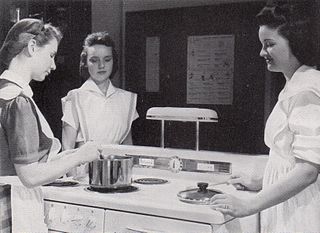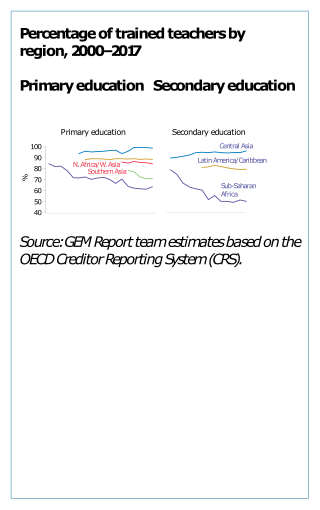A mindset is an established set of attitudes of a person or group concerning culture, values, philosophy, frame of mind, outlook, and disposition. It may also arise from a person's worldview or beliefs about the meaning of life. A person can have multiple mindsets, whilst the two most common ones are often cited as the growth and fixed mindset, a person also has a money mindset which can be more deeply described as a poverty mindset or a wealth mindset. There are also: abundance mindset, positive mindset, negative mindset, victim mindset, protector mindset, poverty mindset, rich mindset, wealth mindset, losing mindset, and winning mindset among others that form the make up of a person's overall mindset based on the various values, beliefs, experiences and opinions that comprise the thinking on a conscious and unconscious level regarding these things.

Action research is a philosophy and methodology of research generally applied in the social sciences. It seeks transformative change through the simultaneous process of taking action and doing research, which are linked together by critical reflection. Kurt Lewin, then a professor at MIT, first coined the term "action research" in 1944. In his 1946 paper "Action Research and Minority Problems" he described action research as "a comparative research on the conditions and effects of various forms of social action and research leading to social action" that uses "a spiral of steps, each of which is composed of a circle of planning, action and fact-finding about the result of the action".
Transformative learning, as a theory, says that the process of "perspective transformation" has three dimensions: psychological, convictional, and behavioral.
Transformative learning is the expansion of consciousness through the transformation of basic worldview and specific capacities of the self; transformative learning is facilitated through consciously directed processes such as appreciatively accessing and receiving the symbolic contents of the unconscious and critically analyzing underlying premises.

Experiential education is a philosophy of education that describes the process that occurs between a teacher and student that infuses direct experience with the learning environment and content. The term is not interchangeable with experiential learning; however experiential learning is a sub-field and operates under the methodologies of experiential education. The Association for Experiential Education regards experiential education as "a philosophy that informs many methodologies in which educators purposefully engage with learners in direct experience and focused reflection in order to increase knowledge, develop skills, clarify values, and develop people's capacity to contribute to their communities". Experiential education is the term for the philosophy and educational progressivism is the movement which it informed. The Journal of Experiential Education publishes peer-reviewed empirical and theoretical academic research within the field.

Experiential learning (ExL) is the process of learning through experience, and is more narrowly defined as "learning through reflection on doing". Hands-on learning can be a form of experiential learning, but does not necessarily involve students reflecting on their product. Experiential learning is distinct from rote or didactic learning, in which the learner plays a comparatively passive role. It is related to, but not synonymous with, other forms of active learning such as action learning, adventure learning, free-choice learning, cooperative learning, service-learning, and situated learning.
The International Baccalaureate Primary Years Programme (PYP) is an educational programme managed by the International Baccalaureate (IB) for students from kindergarten to fifth grade. While the programme prepares students for the IB Middle Years Programme, it is not a prerequisite for it. The subject areas of the PYP are language, social studies, mathematics, science, technology, arts; personal, social and physical education. Students are required to learn a second language during the programme. Assessment is carried out by teachers according to strategies provided by the IB, and with respect to guidelines to what the students should learn specified in the curriculum model.

The Carnegie Foundation for the Advancement of Teaching (CFAT) is a U.S.-based education policy and research center. It was founded by Andrew Carnegie in 1905 and chartered in 1906 by an act of the United States Congress. Among its most notable accomplishments are the development of the Teachers Insurance and Annuity Association (TIAA), the Flexner Report on medical education, the Carnegie Unit, the Educational Testing Service, and the Carnegie Classification of Institutions of Higher Education.
Reflective practice is the ability to reflect on one's actions so as to take a critical stance or attitude towards one's own practice and that of one's peers, engaging in a process of continuous adaptation and learning. According to one definition it involves "paying critical attention to the practical values and theories which inform everyday actions, by examining practice reflectively and reflexively. This leads to developmental insight". A key rationale for reflective practice is that experience alone does not necessarily lead to learning; deliberate reflection on experience is essential.

Student voice is the individual and collective perspective and actions of students within the context of learning and education. It is identified in schools as both a metaphorical practice and as a pragmatic concern. Tech educator Dennis Harper noted that student voice gives students "the ability to influence learning to include policies, programs, contexts and principles."

Teacher education or teacher training refers to programs, policies, procedures, and provision designed to equip (prospective) teachers with the knowledge, attitudes, behaviors, approaches, methodologies and skills they require to perform their tasks effectively in the classroom, school, and wider community. The professionals who engage in training the prospective teachers are called teacher educators.
Educational leadership is the process of enlisting and guiding the talents and energies of teachers, students, and parents toward achieving common educational aims. This term is often used synonymously with school leadership in the United States and has supplanted educational management in the United Kingdom. Several universities in the United States offer graduate degrees in educational leadership.
Michigan Virtual University (MVU) is a private, nonprofit corporation that provides online educational tools, resources and courses for middle and high school students, parents and K-12 educators. Established in 1998 by the Michigan governor John Engler and the Michigan Economic Development Corporation, MVU is governed by an independent Board of Directors composed of individuals representing business, industry, higher education, K-12 education and state government. MVU also provides Michigan's K-12 educators access to online courses and resources to meet professional development requirements and earn State Continuing Education Clock Hours.

Michael Fullan is the Global Leadership Director, New Pedagogies for Deep Learning. Deep Learning, as described by NPDL, is mobilized by four elements that combine to form the new pedagogies. They are: Learning Partnerships, Learning Environments, Pedagogical Practices, and Leveraging Digital.

Open educational practices (OEP) are part of the broader open education landscape, including the openness movement in general. It is a term with multiple layers and dimensions and is often used interchangeably with open pedagogy or open practices. OEP represent teaching and learning techniques that draw upon open and participatory technologies and high-quality open educational resources (OER) in order to facilitate collaborative and flexible learning. Because OEP emerged from the study of OER, there is a strong connection between the two concepts. OEP, for example, often, but not always, involve the application of OER to the teaching and learning process. Open educational practices aim to take the focus beyond building further access to OER and consider how in practice, such resources support education and promote quality and innovation in teaching and learning. The focus in OEP is on reproduction/understanding, connecting information, application, competence, and responsibility rather than the availability of good resources. OEP is a broad concept which can be characterised by a range of collaborative pedagogical practices that include the use, reuse, and creation of OER and that often employ social and participatory technologies for interaction, peer-learning, knowledge creation and sharing, empowerment of learners, and open sharing of teaching practices.
Richard DuFour was an American educational researcher noted for developing strategies to create collaborative teaching environments in K–12 schools.
The College of Education is one of 15 colleges at The Pennsylvania State University, located in University Park, PA. It houses the departments of Curriculum and Instruction, Education Policy Studies, Learning and Performance Systems, and Educational Psychology, Counseling, and Special Education. Almost 2,300 undergraduate students, and nearly 1,000 graduate students are enrolled in its 7 undergraduate and 16 graduate degree programs. The college is housed in four buildings: Chambers, Rackley, Keller, and CEDAR Buildings.

Teacher leadership is a term used in K-12 schools for classroom educators who simultaneously take on administrative roles outside of their classrooms to assist in functions of the larger school system. Teacher leadership tasks may include but are not limited to: managing teaching, learning, and resource allocation. Teachers who engage in leadership roles are generally experienced and respected in their field which can both empower them and increase collaboration among peers.
Conducting instructional rounds is a process that school districts and schools use to better understand teaching and learning in schools in order to improve learning at scale. In an instructional rounds session, a group of educators, from perhaps 20 to 40 in size, makes a series of visits to multiple classrooms to observe what is taking place in the instructional core. Low inference observation notes are taken about a learning problem identified by the school being observed. The observation notes are used to create a data picture of what has been seen in teaching and learning practices throughout the school. It is these data and practices that are shared with the school, not information about individual teachers or students. Adapted from the practice of grand rounds in medical school, the aim of instructional rounds is to observe teaching and learning to discern root causes for problems identified by the school and to help the school and district create more productive outcomes. Distinct from supervision and evaluation, instructional rounds are used to describe what is happening in classrooms and to share observations with educators - and are not intended to be evaluative.
Data-driven instruction is an educational approach that relies on information to inform teaching and learning. The idea refers to a method teachers use to improve instruction by looking at the information they have about their students. It takes place within the classroom, compared to data-driven decision making. Data-driven instruction works on two levels. One, it provides teachers the ability to be more responsive to students’ needs, and two, it allows students to be in charge of their own learning. Data-driven instruction can be understood through examination of its history, how it is used in the classroom, its attributes, and examples from teachers using this process.
Solution Tree is a professional development company and publisher of educational material for K–12 educators. Founded in 1998, the company provides services and products that include books, videos, conferences, workshops, consultation, and online courses. Solution Tree authors and consultants provide guidance to schools and districts on topics such as professional learning communities, response to intervention, educational assessment, and Common Core State Standards.








